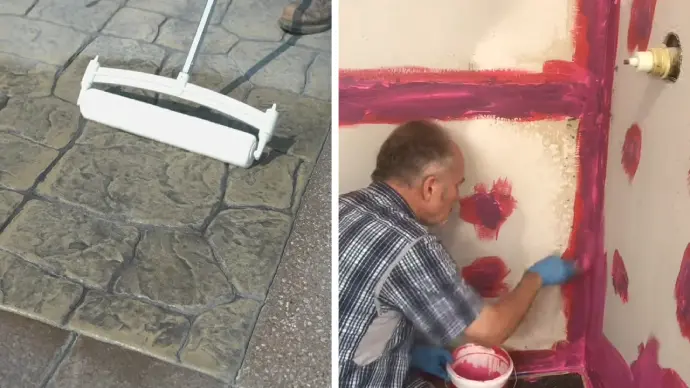If durability is what you’re after, concrete is the way to go. But even the strongest materials can use a little help when faced with the great outdoors. Here’s where concrete sealers and waterproofers step up to the plate. These are two different kinds of protection for concrete surfaces.
They’re both different, but they’re both great. A concrete sealer shields against moisture, stains, and abrasion, while a waterproofing solution is designed to prevent water from penetrating the surface. Also, there are essential distinctions in durability, surface penetration, and lifespan.
Today, we’ll explore the differences between concrete sealers and waterproofers and which is best suited for your needs. We’ll also discuss the best products for waterproofing concrete. Keep reading to learn how to protect your concrete surfaces, whether you’re a DIYer or a contractor.
Differences Between the Concrete Sealer & Waterproofer
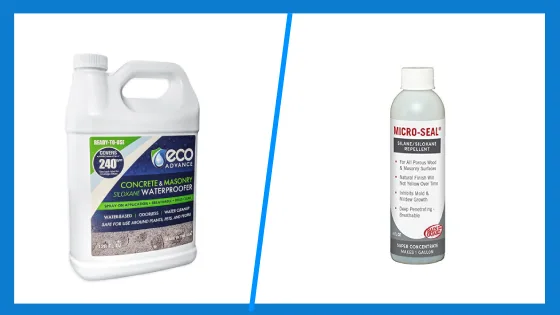
The difference between concrete sealer and waterproofer is essential when protecting concrete surfaces. Here are some key differences:
- Function:
- Durability:
- Lifespan:
- Protection:
- Application:
Function:
Protect your surfaces from damage with a layer of sealant or a deep-penetrating waterproofer. While both products serve the purpose of protecting surfaces, they function differently.
The concrete sealer creates a top layer that protects the surface from stains, corrosion, and damage caused by UV rays. Conversely, waterproofer penetrates deeply into the concrete to fill gaps and create a protective layer from within.
Concrete sealer and waterproofer can be used separately or in combination to provide a comprehensive surface protection system. Choosing between concrete sealer and waterproofing depends on the surface, the level of protection you need, and the weather.
Durability:
Opt for the more durable sealant or deep-penetrating protection for surfaces intended to stand the test of time and the elements. In this case, waterproofers are the better choice as they provide a much higher level of durability than sealers.
Sealers only form a thin layer of protection on the surface, while waterproofers penetrate deep into the concrete to create a protective barrier. This barrier protects against water damage but also against other harmful elements like chemicals, UV rays, and abrasion.
Lifespan:
As time passes, the protective solution you choose for your concrete will inevitably deteriorate, regardless of penetration depth. This means that the lifespan of both concrete sealers and waterproofers will eventually end.
Depending on the product and conditions, concrete sealers generally last ten times longer than unsealed concrete. Conversely, waterproofers may need to be reapplied more frequently to maintain effectiveness.
Protection:
Concrete sealers protect your concrete surfaces, making them resistant to moisture absorption and staining. This is especially important if concrete surfaces are exposed to harsh weather conditions or chemicals. These also protect against surface damage, such as cracking, spalling, and scaling.
Alternatively, waterproofers are designed to repair cracks and close leaks in your concrete surfaces. They offer more intensive protection against water damage and can help prevent costly repairs.
Waterproofers also have the added benefit of preventing mold and mildew growth, which can be hazardous to your health. If you apply a waterproofer to concrete surfaces, you can rest assured that they will be protected from water damage and other problems.
Application:
When applying concrete sealers and waterproofers, careful preparation is key. When applying a concrete sealer, following the manufacturer’s instructions carefully is important.
Some sealers may require multiple coats, while others may need to be applied in a specific temperature range or with a certain type of applicator. Waterproofing compounds may also require a careful application, with crack repair and curing time needed for new concrete.
What Types of Concrete Sealers Are Available?
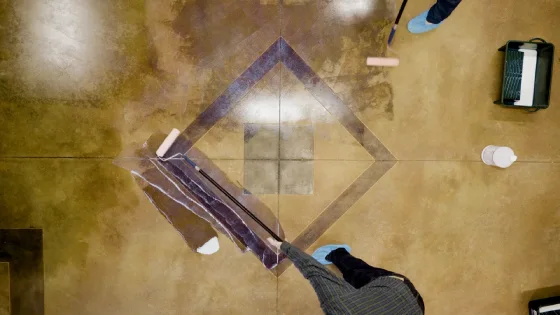
You can choose between a glossy acrylic, durable polyurethane, or tough epoxy to give your concrete surface a protective shield. Each type of sealer offers unique benefits and can enhance the look of your concrete surface.
Here are three types of concrete sealers you can choose from:
Acrylic Sealers
These types are water-based and offer a glossy finish to the concrete surface. Acrylic sealers are easy to apply and dry fast, so they’re great for DIY. They also provide protection against UV rays, preventing the concrete from fading over time.
Polyurethane Sealers
These are highly durable and can withstand heavy traffic and chemical exposure. They are ideal for high-traffic areas like driveways, garages, and commercial floors. Polyurethane sealers provide a matte finish and are available in water- and solvent-based formulations.
Epoxy Sealers
These are the toughest of the three and provide excellent protection against abrasion, impact, and chemicals. They are commonly used in industrial and commercial settings and can be used to add a decorative element to the concrete surface. Epoxy sealers offer a high-gloss finish and are available in various colors.
Does concrete sealer make it waterproof?
While many believe that a sealer will waterproof their concrete, the truth is it won’t make it completely impervious to water. Instead, it will provide barrier protection against water and other elements that can cause damage over time.
To understand how a concrete sealer works, let’s take a closer look at its properties. A sealer is typically made up of a mixture of chemicals that form a protective barrier on the surface of the concrete.
This barrier is designed to prevent water and other substances from penetrating the surface of the concrete. While a sealer can help reduce the amount of water that seeps into the concrete, it’s important to note that it won’t completely eliminate the risk of water damage.
Will concrete sealer fill hairline cracks?
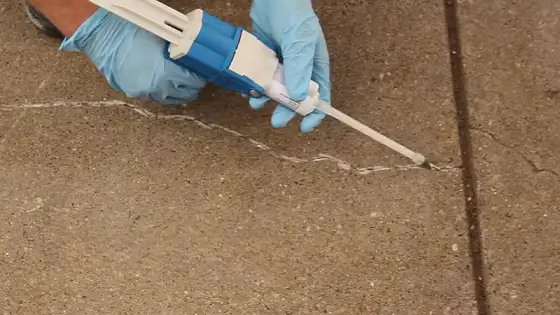
Some specific sealers can fill hairline cracks in concrete surfaces and provide added protection against water and stains. These sealers penetrate the pores of the concrete and react with the minerals to form a solid barrier.
The good thing about using a sealer to fill hairline cracks is that it not only hides the defects but also strengthens the concrete. When applied correctly, the sealer can enhance the durability of the surface and prevent further cracking.
This is because it helps to keep moisture out, which is one of the main culprits of concrete deterioration. Also, if you use a sealer that is UV resistant, it can also protect the surface from sun damage and discoloration.
What is the best product for waterproofing concrete?
The best product for waterproofing your concrete is a polyurethane membrane sealer. This material is considered one of the market’s most effective and long-lasting waterproofing solutions.
Polyurethane can be applied seamlessly and deeply penetrates the surface of your concrete. It fills in even the finest hairline cracks, reducing the water absorbency capacity of your concrete.
Doing so ensures that your concrete remains waterproof and prevents damage from moisture. In addition to its effectiveness, polyurethane is also a durable and long-lasting material.
It can withstand extreme weather conditions, UV radiation, and temperature fluctuations without deteriorating. This makes it an excellent investment for those who want to keep their concrete structures in good condition for years.
When should a waterproofer be applied to the new concrete sealer?
You need to wait for the concrete sealer to cure before applying a polyurethane coating to prevent cracking. Waterproofing products typically recommend waiting at least 7 days after pouring before applying a waterproof coating.
During this time, the concrete sealer is still expelling water vapor and air, even if it appears set. Applying a coating too soon can trap moisture and air inside, leading to cracking and an ineffective waterproofing solution.
Can multiple coats of a sealer or waterproofer be applied for better coverage?
If you want your waterproofing solution to last, apply multiple coats of protective coatings for better coverage and a longer lifespan. However, note that you shouldn’t apply all the coats at once.
Instead, apply one coat of the sealer or waterproofer at a time to avoid oversaturating the surface and causing peeling or chipping.
In most cases, applying one coat of the sealant or waterproofer is sufficient. But if you decide to apply a second coat, wait at least 24 hours before doing so. This allows the first coat to dry and cure properly, ensuring that the second coat adheres to the surface and provides optimal protection.
Can I apply 3 coats of concrete sealer?
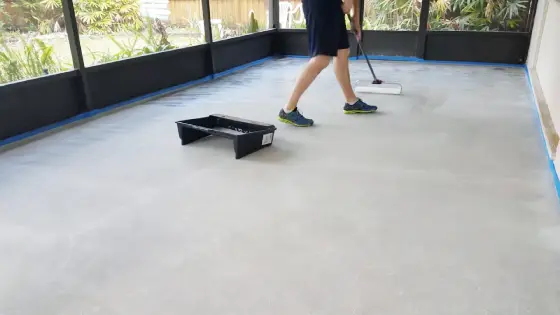
Even though applying an extra layer of sealer may seem like a good idea, concrete sealers should be applied in two thin coats. Applying more than two coats of sealer can actually be counterproductive, as it can lead to the formation of bubbles in the sealer surface.
When too much sealer is applied, the air displaced through the surface can’t escape, causing it to form a bubble in the sealer surface. This not only looks unsightly, but it can also cause the surface to become weaker and more susceptible to damage.
Also, applying too much sealer can result in a thick, uneven surface that is difficult to maintain and repair. To ensure that your concrete surface is properly protected, it’s best to follow the manufacturer’s instructions and apply two thin coats of sealer.
Make the Right Choice: Concrete Sealer or Waterproofer
Now you understand the differences between concrete sealer and waterproofer and the benefits and limitations of each. Choose a concrete sealer based on the type of sealer, surface to be applied, and appearance and level of protection desired.
While concrete sealers can help prevent water damage and staining, they can’t make concrete completely waterproof or fix significant damage or cracks. When waterproofing concrete, choose a product specifically designed for this purpose and follow the manufacturer’s instructions carefully.
By choosing the right product and properly preparing and applying it, you can help ensure that your concrete surfaces remain protected and look their best.
